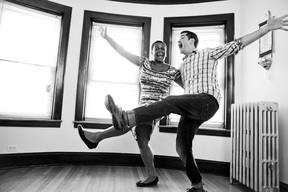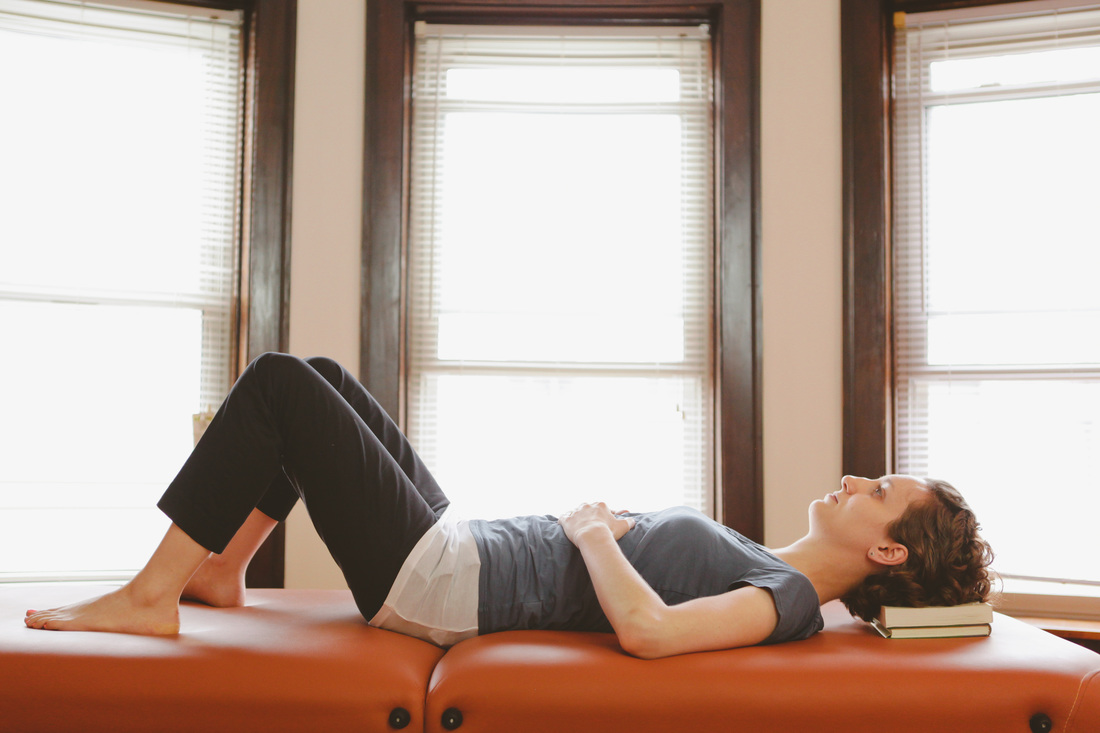|
3/25/2016 0 Comments Quick Tip: Don't Over (not) Do It Its Spring. That means The world is awakening from its winter slumber, and with it, our drive to get out, enjoy, and accomplish. I've noticed a curious phenomenon among my students over the last week or two. I spend a lot of time working on the Alexandrian concept of Inhibition with them--not reacting immediately to a stimulus to give time for consciousness, choice, and change. Normally, this serves as a check on the overwhelming urge to 'do'--Endgaining without examining the Means-Whereby one might accomplish a task. But with the advent of the active season, it seems this has turned. A couple students have reported to me that their Directions have not been as useful lately, and they have found Inhibition to be frustrating. I ask them how often they try to apply the work. They say 'all the time'. And here is the root of the problem. It always pays dividends to apply Alexander work with a light touch. There is such a thing as too much of a something good, and if you are constantly trying to Inhibit and Direct every moment, it is easy for it to turn into over-control, or even over-effort. Our drive for life and accomplishment (which for many of us has an over-arching tension in it) takes over and starts infecting our efforts to be more free. To minimize this, in times of stress or enthusiasm, rather than reacting to the stimulus to 'do' by over-Inhibiting, let your self have a moment of pause every couple hours or just once a day. You will find more freedom without being tempted into anxiety or it feeling restrictive to your love of life. As my first teacher Betsy used to say 'Inhibition is really just saying Yes to everything'.
0 Comments
To say there is a lot of anxiety in the air right now is an understatement. Among other things, caregivers report a strong uptick in clients due to stress from the presidential election. But for many of us, anxiety is something we deal with on a daily basis. There are a lot of ways the Alexander Technique can help anxiety. By helping us to live more in the present, with less habitual tension, it can help us to undo frozen feeling stored in our body and clear our emotional life to flow freely. It can also help us to recognize the beginning of an anxious reaction and release it while it is manageable. Below is a link to a stream-able on Soundcloud 10-minute active rest talk-through meant to help prevent and release anxiety and bring you into a healthier state of mind and body. In case you have not experienced active rest before, I have included basic written instructions underneath the link, as well as the above image of what the position looks like (no massage table necessary, just a firm surface such as a yoga mat or blanket on the floor.). Enjoy and Keep Thinking Up! Soundcloud Active Rest Talk Through to Ease Anxiety How to Do Active Rest
Lie on the floor with books under your head, knees towards the ceiling, and feet balanced with the heel and ball touching the floor. The height of the books should be such as to not allow your head to loll backwards, but not so high as to make you feel like the front of your throat is pinched. Your hands should be placed comfortably on your belly or lower ribs with your elbows wide and resting on the floor in a way so as they can feel secure. This nearly completely supported position reinforces the natural positive directions of the body: Neck freeing, spine lightly stretching, back widening , legs freeing away from the torso, arms relaxed and connected, elbows widening and released to the floor. This position can re-expand the discs between your vertebrae and helps you to regenerate spinal fluid, as well as releasing excess tension from your body and mind. Optimally, you should do it for somewhere between 12 and twenty minutes in the middle of the day. It can also be used to get in touch with your body’s directions before a performance or to help relax you before bed for better quality sleep. I didn't set out to write a blog with a stupid millennial boy band reference. It just turned out that way. This series is going to feature a breakdown of the basic Alexander Directions--taken one at a time. One...direction...at a time. Get it? Ok, now that you've stopped laughing hilariously, you are probably thinking 'what are these directions you speak of?' Directions are postural 'thoughts' you give yourself. The relationships that help to create length and space in our poise are very delicate, and cannot be forced with muscular effort. Trying to pull yourself into good poise actually results in tension and shortening. By definition muscles contract to work. Nor can they be forced to released, at least not without a qualified massage therapist following you around constantly and working on you while you perform every activity, which would be expensive and impractical. However, our minds and bodies are one and the same, and so specific thoughts can encourage these relationships to free up without muscular effort. If you doubt that our thinking can have an impact on our bodies, try this: get up, walk around the room habitually. Good job. Now, try the same thing, but picture your body is made of air. Well done. Did your movement change? Did it fell lighter, easier? This is an example of a gross use of thinking. Directions function on the same principle, but are more specifically targeted, aimed at enlivening our natural suspension system. There are four main directions that F.M. Alexander developed as being primary--having to do with our central postural system--and secondary directions that help to promote freedom in specific 'parts' of the body(arms, elbows, ankles, hips). These directions all have significance separately but, like the boy band, really reach their full harmony, effectiveness, and appeal together. And like the boy band, not every member is the same, and there is a definite formula to how to take them in order to achieve success. So, with the help of the One Direction Wikipedia entry, here we go on our first direction in the 5 part series; 'Allow the Neck to be Free'. Why is this direction important, and why does it come first? Because it is the gateway to everything that happens afterwards. Like songwriter Liam Payne, it is not the flashiest direction, but without it, the more interesting ones(such as 'Head Forward and Up', the Harry Styles direction) would not be able to do their thing. Ultimately, every muscle in our body is networked in to the incredibly complex mass of fibers that make up our neck. Because of that connection, if the neck is shortened or contracted, everything in your body shortens and contracts. As Walter Carrington, the great A.T. teacher, said "When we say free the neck; we in some ways are saying free the whole body". Neck tension also pulls the head out of alignment with the body, preventing other directions in the sequence from being possible.
Literally, if the neck is tight, the following movements cannot occur. In addition, it interferes with the torso's ability to spiral with ease, as the spirals of muscle encasing our torso end at the neck, keeping us from having the flexibility we need in the torso to move and balance easily. Lastly, neck tension coincides with one of the first manifestations of the startle reaction--the response that tightens our body in a fight/flight/freeze way in response to a threat. Freeing the neck is the first step in unwinding this caustic and often un-useful response. Like Liam, it might not be the cutest, it might not have the strongest voice, it may sometimes not seem to have the most engaging personality. It is really hard to get a read on sometimes. But without it, you wouldn't know you were beautiful, and how terrible would that be? So...to take this direction alone: Find a quiet moment, in a healthy seated relationship (feet touching the floor, not slumped on the back of the chair or braced upwards) or constructive rest. Simply, think the thought 'my neck is free'. Speak it gently to yourself in your mind's eye--neither a command or a formless image, Don't try to do anything after thinking it--resist the temptation to try to 'do' the suggestion, resist the temptation to try to feel whether it is working--trust it. Try not to hold your breath. Perhaps count to ten in your mind to make sure you are giving it space to function. Then, give your direction again. It might feel slightly different. This is a sign something has subtly changed. Repeat 5-10 times, and then go back to what you were doing--if you turn your head gently from side to side, does it feel easier to move?Does it take less effort to let it spiral? Some people find an alternative phrasing helpful: Try 'allow the neck to be free' or 'allow the neck to melt into length' as other ways to phrase this direction. See if you can include the whole neck, not just the back: Let it be three dimensional: front, back, and sides. Try working this practice into a daily activity. Does it give you just a bit more freedom? That's it for this week. Check back next week, when we will be discussing 'Forward and Up'--the Harry of the group, which is really what you came here for anyway, right? |
Thoughts on what is going on in the work and the world right now. Many posts to come. Archives
June 2021
Categories |

 RSS Feed
RSS Feed